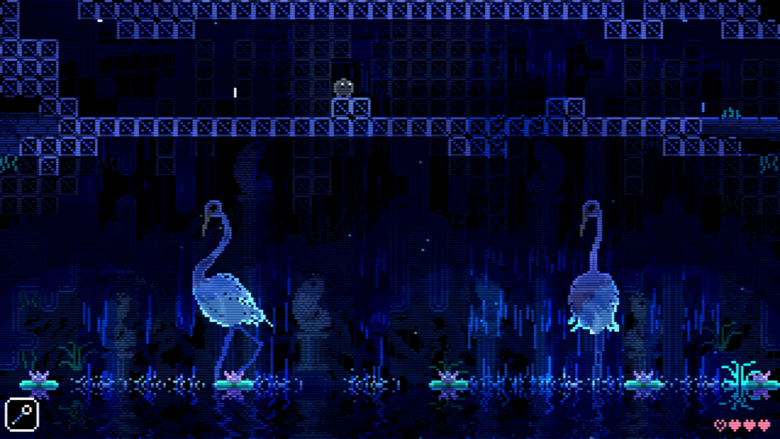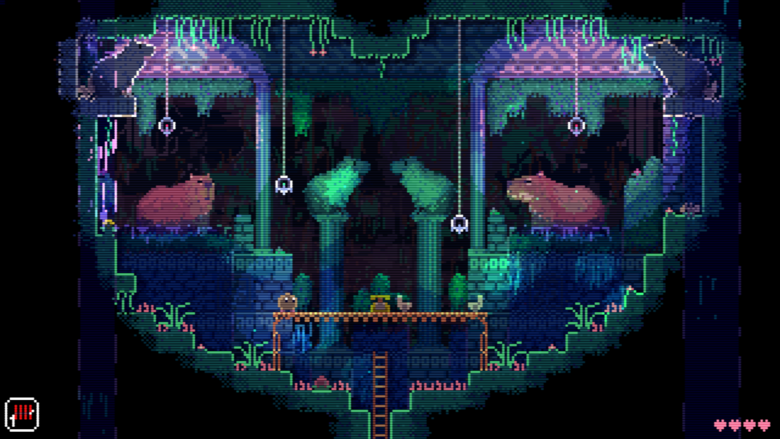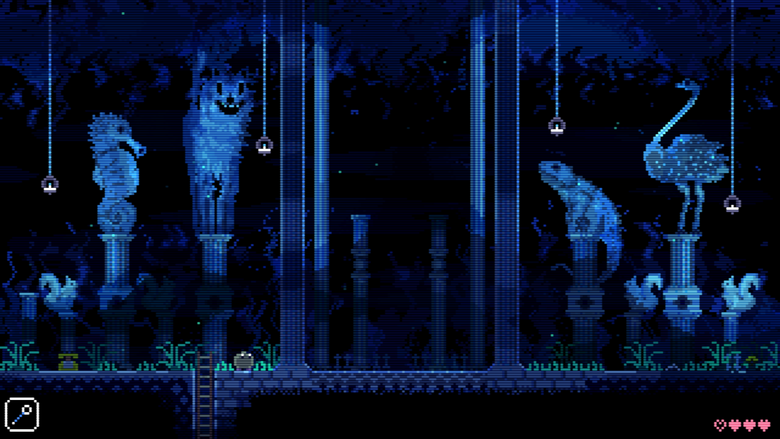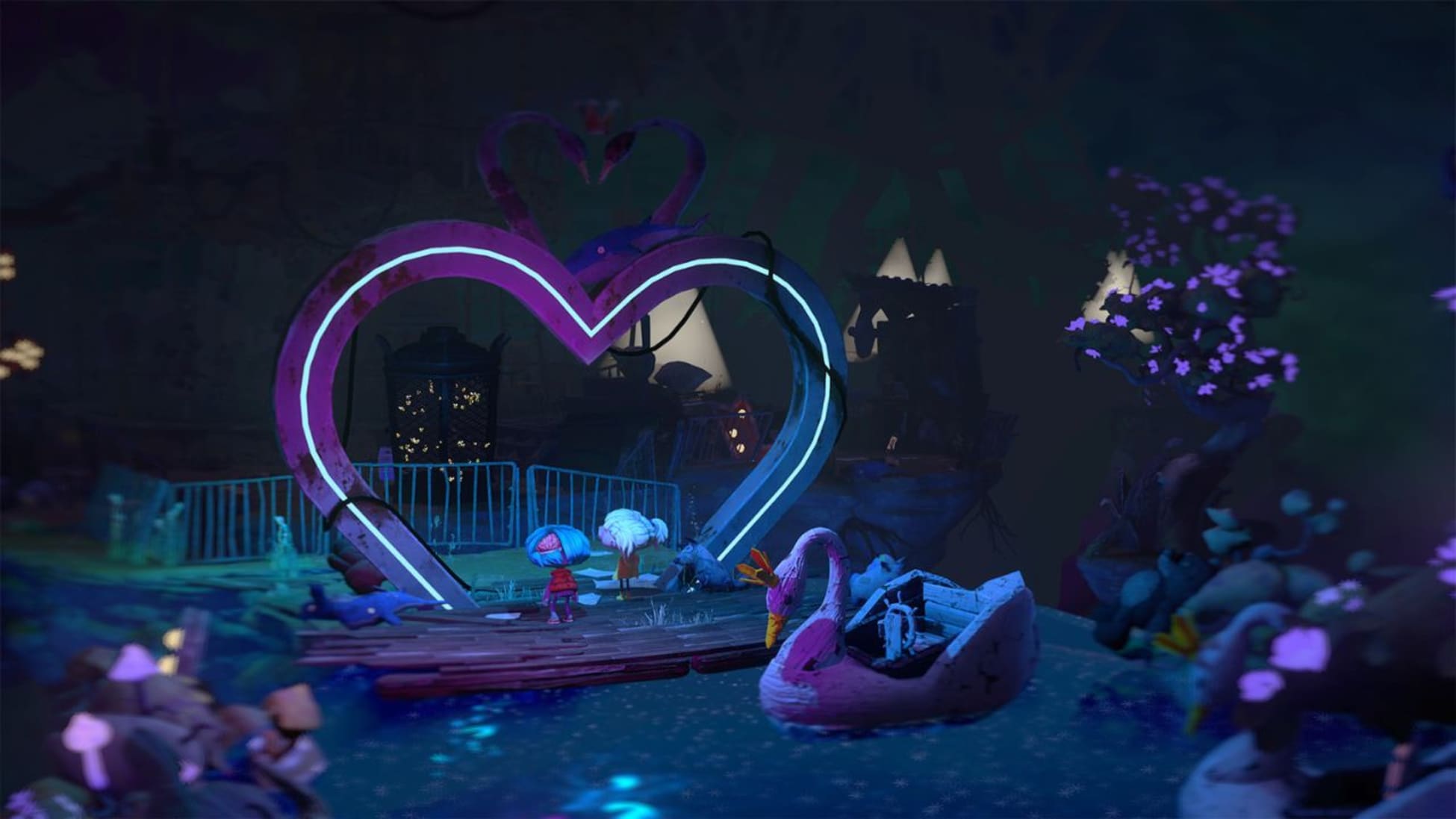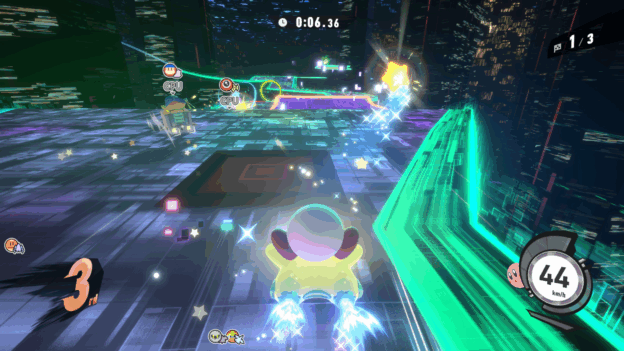REVIEW: Animal Well is one hell of a creature feature
While my first taste of gaming came from the Atari 7800 and the arcade, the bulk of my childhood was spent playing NES games. I am very much a product of that era, which means I’ve carried certain sensibilities with me throughout the years.
For better or worse, there were things NES games did that still resonate with me deeply to this day. Be it a design choice, the product of an industry finding its way, or nothing more than the sign of hardware limitations, NES games did things differently. In my opinion, one of the hallmarks of NES gaming were experiences that didn’t give you all the details. Multiple games kept a number of their mechanics, instructions and features secret, leaving the player to discover them on their own.Castlevania II: Simon’s Quest is a perfect example of this, but it’s also a game that took this approach to the extreme.
Now, at the ripe old age of 42, I still look back fondly on those days of mystery-filled NES gaming. I’m not someone who’ll say gaming was better back then and we’ve lost our way, but for my personal tastes, there’s a bit too much hand-holding in today’s games. I 100% think those components should be in every game, but as the player, I’d love to have an option of turning hints and prodding off. Let me wander, get lost, become confused…I want to figure things out on my own. For me, nothing beats that feeling of an “Aha!” moment where everything clicks and you find your way out of a conundrum that’s had you stuck for hours.
That long-winded intro takes us right up to Animal Well, a Metroidvania that puts you in control of a sentient blob. As the blob, you’re plopped down into a mystery well that’s filled with creatures, puzzles, and seemingly limitless possibilities. From the opening moments to the very end of the game, you’re left to your own devices to figure out what to do, where to go, and how to make your way through the adventure. You’ll need a keen eye, patience and a sense of exploration to see Animal Well through to its end, and for an ancient gamer like myself, it couldn’t have been a more enjoyable experience.
The older you get, the more you like bird-watching
Animal Well absolutely revels in its decision to not tell the player anything. You’ll see puzzles with no clue as to how to solve them, pick up items that hide their functions, come across animals that may help or hurt you, and so on. The only way to figure these things out is by interacting with them. Press every button, jump down every pit, study every animal’s movements and so on. The environment is chock-full of context clues on how to bend the game to your will, but it’s up to you to suss them out.
There are so many spots in Animal Well that are head-scratchers. You’ll most likely see the end goal of how to get somewhere or what you’re supposed to do, but you’ll probably have no idea how to accomplish it. That’s somewhat par for the course with the Metroidvania genre, but more often than not, other games in the genre will give you a very obvious weapon, item or ability to answer your questions. Animal Well will give you a collection of trinkets that might spark a solution or two, but you’ll also need to use these items multiple times over just to unlock all the secrets and opportunities they hide.
A good example of a multi-use item in Animal Well is the yo-yo. In any other game you might automatically think of a yo-yo as a weapon. In Animal Well, you really don’t have any enemies to fight. There are creatures to avoid, but nothing you’ll actively be doing battle with. This leaves puzzle-solving the main focus of the yo-yo, and simply playing with the tool will show you its many benefits. If you plan on seeing the credits roll in Animal Well, you’ll be using that yo-yo to interact with areas and animals in the well, and multiple instances may surprise you when you figure them out.
This is my capy place.
Much like TUNIC, Animal Well goes out of its way to hide its mechanics and features in terms of explanation. All you have to do is play the game and these opportunities will become obvious. You’ll happen upon an expertly-crafted puzzle or platforming section that will seem impossible at first, which forces you to sift through your collection of items. You’ll try a number of solutions or ideas until one random attempt leads to a breakthrough. That will then open your eyes to how you can access other areas in the game, and so on. Animal Well is a constant string of those discoveries, making you feel like an absolutely brilliant explorer as you travel deeper into the well.
The most impressive part of Animal Well for me was how ingeniously built the game world is. I’ve played many a Metroidvania before where there was plenty of backtracking to be done, but I’d eventually have a moment or two where I had no clue what to do. I’d scour the map for doors I hadn’t accessed or pieces of the map unexplored. This led to hours of aimlessly wandering about in the hopes of catching a spot that you accidentally skipped over or passed by without actually looking at. Animal Well is what might be the first Metroidvania I’ve played where that never happened.
I don’t know if I got lucky on my playthrough or the map is that well thought-out, but I didn’t have a single moment of feeling lost. There was a flow to my 5.5 hour playthrough that was unlike any other I’ve had in a Metroidvania. The way I happened upon tools or tricky rooms always gave me ideas on what to do or where to go next. The map’s excellent stamp feature also helped me keep track of important areas I wanted to revisit, so at most, I’d need to take a few seconds to reference my map to see what I should tackle next. For me, Animal Well was an experience where the game’s puzzles kept me occupied and engaged, rather than the map itself artificially inflating my playtime.
Is this a Legends of the Hidden Temple meeting?
That sense of mystery in Animal Well’s gameplay is also present in the visuals and audio. Animal Well is about as unique as they come in all aspects, with graphics that are both retro and modern, featuring designs that allure with their otherworldly style. The game’s audio, which is mostly ambient, helps to bring the well itself to life. You’re constantly bombarded with the sounds of your adventure, be it the yell of some random creature off in the distance, the whirring of fans in a puzzle room, or the soothing sounds of a save room. It creates an atmosphere that sticks with you while also pushing you to explore deeper to unlock the secrets ahead.
…and boy, are there secrets.
I am very well aware that I’ll never personally solve all the puzzles in Animal Well. There are plenty tucked away in the game with a good amount blocking your path to the end, but many, many more waiting for the completionists to crack. Animals trapped in cages calling for your help, pixel puzzles begging to be solved, a litany of collectible eggs that pave the way for even grander mysteries and so on. For those who love to really dive deep into every nook and cranny of a Metroidvania, Animal Well is a dream come true. For those who’d rather take a more traditional approach through a Metroidvania, you should be able to see your way through to the end without too much in the way of taxing work.
Quite honestly, I can’t think of another Metroidvania I’ve played that feels quite like Animal Well, and that’s no easy thing to do in this flooded genre. There are pieces and parts I’ve seen in other games over the years, but nothing that aligns exactly with Animal Well. As a massive Metroidvania fan, I simply can’t get enough of the genre, but I can also recognize when something stands out from the crowd. Animal Well is very much that; a Metroidvania through and through that manages to also elevate the genre in a number of impressive ways. There’s no doubt other Metroidvanias to come will take inspiration from Animal Well, pushing the genre forward yet again.
Animal Well is a watershed moment in Metroidvanias, and it’s easily found its way into the small collection of greatest Metroidvanias of all-time. As to whether it deserves the ultimate crown is a debate for another day, but at the very least, it very much deserves to be in that conversation.


